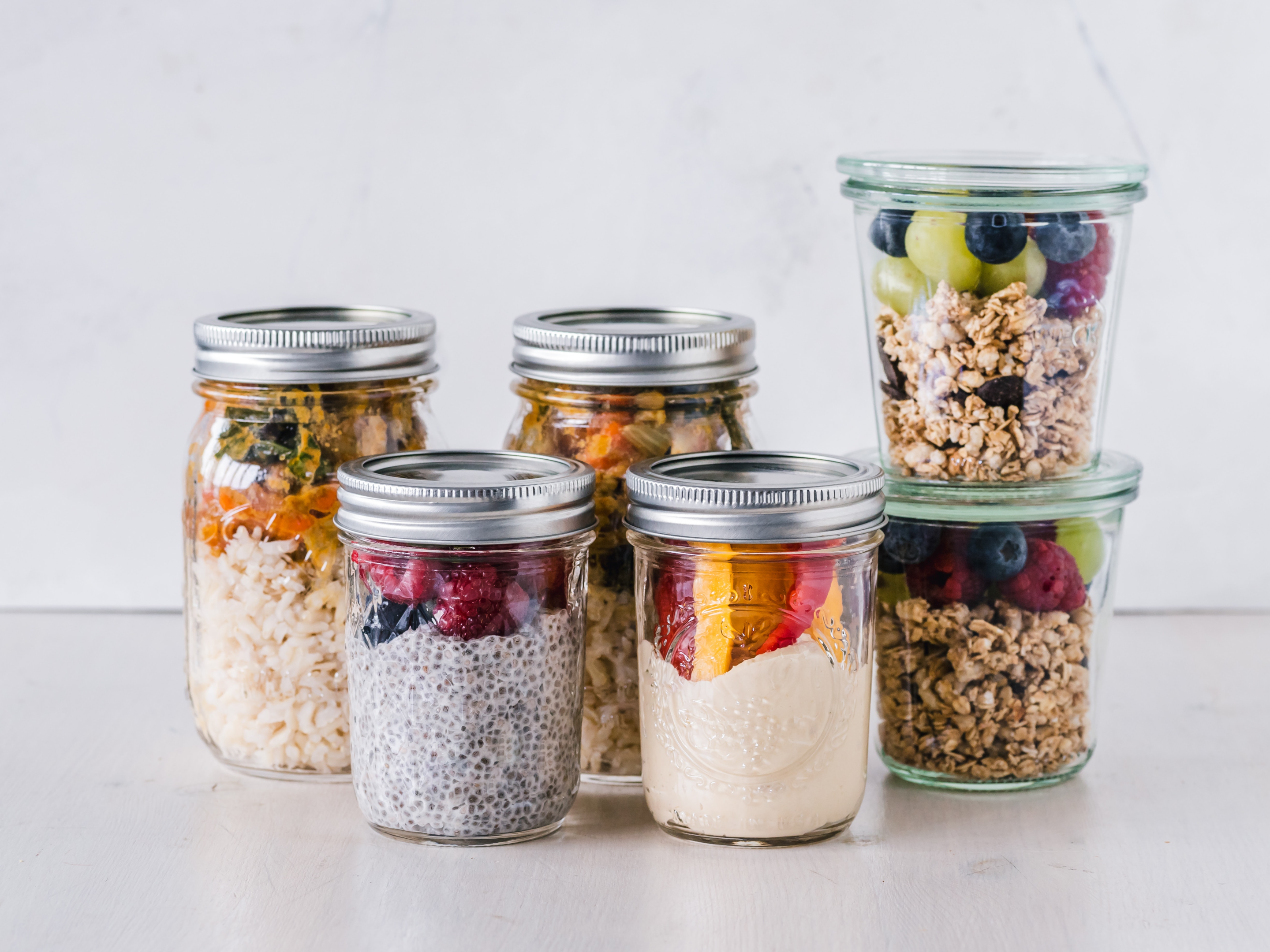Are you a woman over 50 looking to improve your health, lose weight, and feel more energetic? Intermittent fasting for women over 50 might be the answer you’ve been seeking! This flexible and effective approach to weight management and overall health has gained popularity among women in this age group. In this blog post, we’ll explore the science behind intermittent fasting, the best methods for women over 50, its numerous health benefits, practical tips for success, and potential risks and precautions to consider. Get ready to embark on a journey toward a healthier, happier you!
Key Takeaways
- Intermittent fasting is an effective weight loss strategy for women over 50, with potential to reduce inflammation and chronic disease risk.
- Various intermittent fasting methods offer health benefits such as improved metabolic health & reduced inflammation/disease risk.
- Prioritize protein intake, stay hydrated & consult healthcare provider to ensure successful journey!
Understanding Intermittent Fasting for Women Over 50

Intermittent fasting is a powerful tool for women over 50 to shed unwanted body fat, minimize hunger, and boost energy levels. By alternating periods of eating and fasting, you can experience a range of health benefits, including weight loss, improved metabolic health, and reduced inflammation and chronic disease risk. As women age, traditional weight management strategies might become more challenging due to hormonal and metabolic changes. But with the right motivation and dedication, intermittent fasting can be a game-changer for women over 50.
Understanding the science behind intermittent fasting and the impact of age-related changes on fasting is key to its successful implementation. Establishing fasting as a routine can serve as a viable alternative to continuous calorie restriction, especially for menopausal women aiming to lose weight.
The subsequent sections will delve into the science of intermittent fasting, its effectiveness for women over 50, and optimal methods for enduring results.
The Science Behind Intermittent Fasting

Intermittent fasting works by cycling between periods of eating and periods of avoiding or limiting food, leading to various health benefits. The exact mechanisms are not yet fully understood, but some studies have revealed potential benefits, such as improved insulin sensitivity and reduced inflammation. Diet quality is a significant factor to consider when intermittent fasting. Consuming nutrient-dense foods like lean proteins, vegetables, legumes, and fruits, while steering clear of ultra-processed foods, will aid in achieving health goals and ensuring the body receives essential nutrients for maintaining health and energy.
However, lower calorie intake during fasting may also mean lower protein intake. Maintaining muscle mass is crucial for women over 50, as it helps protect against the negative effects of aging, such as inflammation, immune system dysfunction, and insulin resistance. Hence, prioritizing protein intake and incorporating strength training exercises is vital to preserve and potentially enhance muscle mass during intermittent fasting.
Age-Related Changes and Fasting
Hormonal and metabolic changes may influence the fasting experience of women over 50, underscoring the importance of selecting an appropriate fasting method. As women approach menopause, they often experience metabolic changes such as dyslipidemia, impaired glucose tolerance, insulin resistance, hyperinsulinemia, and type 2 diabetes. Furthermore, age-related changes can potentially impact intermittent fasting, including improved cognitive and physical function, reduced disease risk factors, metabolic adaptations, increased frailty and muscle mass, and reduced oxidative stress and inflammation.
Intermittent fasting has been found to have minimal impact on hormones in postmenopausal women, with studies even showing that DHEA levels decreased significantly yet remained within normal limits. This indicates that intermittent fasting could potentially provide positive changes in blood sugar, body fat, and blood lipid levels for women over 50, while also helping to mitigate some of the negative effects of hormonal fluctuations.
Choosing the Right Intermittent Fasting Method

Choosing the right intermittent fasting method for women over 50 is fundamental for achieving enduring success and adherence. Some of the most common forms are the 18:6 method, 16:8 method, the 5:2 method, and modified alternate-day fasting. Each of these methods offers unique advantages and challenges, so it’s essential to choose the one that best suits your lifestyle and health goals.
Comprehending the various intermittent fasting methods and their associated benefits aids in making an informed choice on the most suitable approach for you. The subsequent sections will provide a detailed examination of the 16:8 method, the 5:2 method, and modified alternate-day fasting, assisting you in selecting the method that best aligns with your needs and preferences.
The 16:8 Method
The 16:8 method involves fasting for 16 hours and eating during an 8-hour window, which can be effective for weight loss and metabolic health improvement in women over 50. This means you consume all your meals and calories within an 8-hour period and abstain from eating for the remaining 16 hours. It’s a popular form of intermittent fasting that can help you reach your health and wellness goals.
One of the main advantages of the 16:8 method for women over 50 is its effectiveness for weight loss and improving metabolic health. Restricting food intake to a particular window often leads to reduced calorie consumption, culminating in weight loss and improved glucose tolerance. Moreover, a 16-hour fast enables your body to shift from glucose to fat burning, which contributes to enhanced insulin sensitivity and overall metabolic health.
The 5:2 Method
The 5:2 method consists of eating normally for five days and restricting calories to 500-600 on two non-consecutive days, offering flexibility and weight loss benefits. This approach provides great flexibility, as you can choose the two days that work best for you and your schedule. With the 5:2 method, you can still enjoy your favorite foods on non-fasting days while reaping the benefits of intermittent fasting.
Although the 5:2 method might not provide all the possible health benefits of fasting, it remains an effective strategy for weight loss and its long-term maintenance. This method’s primary challenge lies in the significant calorie restriction on fasting days. Yet, with meticulous planning and a concentration on nutrient-rich foods, the 5:2 method emerges as a sustainable and effective route to weight loss and better health for women over 50.
Modified Alternate-Day Fasting
Modified alternate-day fasting involves fasting every other day with a reduced calorie intake, providing positive impacts on cholesterol and weight management. This method allows you to experience the benefits of fasting while still consuming a limited calorie intake of around 500 calories on fasting days. Studies have shown that alternate-day fasting can lead to a reduction in waist circumference and have a positive effect on total cholesterol.
Modified alternate-day fasting could serve as an effective strategy for women over 50 to reach their health objectives. It’s vital, however, to diligently monitor progress and make necessary adjustments to the fasting schedule to guarantee a safe and successful fasting experience.
Health Benefits of Intermittent Fasting for Women Over 50

Intermittent fasting extends a wide array of health benefits to women over 50, such as weight loss, enhanced metabolic health, and diminished inflammation and chronic disease risk. By adopting a suitable intermittent fasting method, women over 50 can experience positive changes in various aspects of their health, such as blood sugar, body fat, and blood lipid levels.
The subsequent sections will probe deeper into the distinct health benefits of intermittent fasting for women over 50, including weight loss and body composition, enhanced metabolic health, and decreased inflammation and chronic disease risk.
Weight Loss and Body Composition
Intermittent fasting can help women over 50 in the following ways:
- Lose weight and improve body composition by promoting fat loss and preserving muscle mass
- Studies have shown that IF can lead to an overall weight loss of 0.8% to 13.0% of baseline body weight.
- It can help reduce overall calorie consumption, contributing to weight loss
Moreover, intermittent fasting has been found to be effective in helping people maintain their weight over the long term, preventing unwanted weight gain.
For women over 50, weight loss and improved body composition can have significant health benefits, such as reduced risk of chronic diseases and improved metabolic health. By focusing on consuming nutrient-dense meals during eating windows, women can ensure they’re getting the essential nutrients needed for optimal health while still reaping the weight loss benefits of intermittent fasting. This approach can be particularly helpful for menopausal women lose weight and maintain a healthy lifestyle.
Improved Metabolic Health
Improved metabolic health, including better glucose tolerance and the ability to improve insulin sensitivity, can be achieved through intermittent fasting for women over 50. By promoting fat metabolism and ketone production, intermittent fasting helps reduce inflammation, improve glucose and lipid levels, and reduce the release of pro-inflammatory cells, thus providing effective protection against chronic diseases.
Intermittent fasting can have several benefits for women over 50, including:
- Improved insulin sensitivity, which can help regulate energy balance and reduce the risk of chronic diseases.
- Enhanced metabolic health, which can support weight management and overall well-being.
- Reduced inflammation, which is associated with various age-related conditions.
- Increased autophagy, a cellular process that helps remove damaged cells and promote cellular renewal. By adopting a suitable intermittent fasting method and focusing on a nutrient-dense diet, women over 50 can experience these positive effects on their health.
Reduced Inflammation and Chronic Disease Risk
Intermittent fasting can have several benefits for women over 50, including:
- Reducing inflammation
- Lowering the risk of chronic diseases
- Promoting fat metabolism and ketone production
- Limiting inflammation
- Attenuating proinflammatory cytokines and immune cells
- Improving circulating glucose and lipid levels
- Reducing the release of pro-inflammatory cells
These benefits have been supported by studies on intermittent fasting.
By adopting intermittent fasting and focusing on consuming nutrient-dense meals during eating windows, women over 50 can experience reduced inflammation and chronic disease risk. This can lead to improved overall health and well-being, allowing women to age gracefully and enjoy a higher quality of life.
Practical Tips for Successful Intermittent Fasting

Several practical tips can aid women over 50 in ensuring success and adherence to intermittent fasting. Prioritizing protein intake, staying hydrated, and planning nutrient-dense meals can make a significant difference in the overall fasting experience. By implementing these tips, women can maximize the benefits of intermittent fasting while minimizing potential risks and challenges.
The subsequent sections will offer practical advice on emphasizing protein intake, maintaining hydration and electrolyte balance, and planning nutrient-rich meals to facilitate a safe and effective fasting experience for women over 50.
Prioritizing Protein Intake
Protein intake is crucial for maintaining muscle mass and overall health during intermittent fasting, especially for women over 50. Protein is essential for preserving and strengthening muscle mass, as well as promoting overall health and vitality. Women over 50 can ensure adequate protein intake while intermittent fasting by focusing on consuming nutrient-dense meals that are rich in protein and other essential nutrients. Aim for 40 to 50 grams of protein in your first meal after a fast for maximum benefit.
Including a variety of protein sources, such as animal, seafood, and dairy-based proteins, offers an excellent source of protein that is higher than most vegetarian sources. By prioritizing protein intake during eating windows, women over 50 can maintain and even build muscle mass, which is essential for healthy aging and overall well-being.
Staying Hydrated and Replenishing Electrolytes
Hydration and electrolyte replenishment are essential during fasting periods to prevent dehydration and electrolyte imbalances. Drinking plenty of water and other fluids, such as herbal teas, is crucial for staying hydrated while fasting. In addition, incorporating electrolyte-rich foods such as bananas, avocados, and leafy greens into your diet can help replenish electrolytes and maintain proper hydration levels.
Staying well-hydrated and replenishing electrolytes during fasting not only helps prevent dehydration but also supports overall health, energy levels, and blood pressure. By prioritizing hydration and electrolyte balance, women over 50 can ensure a safe and effective fasting experience.
Planning Nutrient-Dense Meals
Planning nutrient-dense meals ensures a balanced diet and adequate nutrient intake during eating windows, promoting overall health and well-being. Meals that fuel your body should include:
- Lean proteins (grass-fed beef, pastured chicken or eggs)
- Healthy fats (avocado, coconut oil)
- Complex carbohydrates (sweet potatoes, oats)
- A variety of fruits and vegetables (bananas, blueberries)
This will ensure you’re getting the essential nutrients you need.
Meal prepping, stocking up on nutritious ingredients, and planning your meals in advance are all excellent ways to ensure your meals are packed with nutrients. By focusing on consuming nutrient-dense meals during eating windows, women over 50 can maximize the health benefits of intermittent fasting while minimizing potential risks and challenges.
Potential Risks and Precautions

While intermittent fasting offers numerous benefits to women over 50, it’s important to be cognizant of potential risks and precautions that come with it. Hormonal changes, bone health concerns, and the importance of consulting a healthcare provider for guidance are some factors to consider before starting intermittent fasting.
The upcoming sections will explore these potential risks and precautions in greater depth, aiding women over 50 in making informed decisions about intermittent fasting and ensuring a safe and efficacious fasting journey.
Hormonal Changes and Hot Flashes
Before starting intermittent fasting, it’s crucial for women over 50 to consider the potential impact on hormonal fluctuations and menopause symptoms. Monitoring your symptoms and adjusting your fasting schedule as needed can help ensure a safe and effective fasting experience.
Bone Health and Muscle Mass
Maintaining bone health and muscle mass is crucial during intermittent fasting, as strength training exercises are recommended to prevent muscle loss and bone fractures. Most studies have found no negative impacts on bone health with intermittent fasting, but it’s essential to implement it in a balanced and healthy manner to maximize the potential benefits it could bring to your bone health and muscle mass.
By prioritizing protein intake, engaging in strength training exercises, and closely monitoring their progress, women over 50 can ensure they maintain their muscle mass and bone health during intermittent fasting.
Consulting a Healthcare Provider
Consulting a healthcare provider before starting intermittent fasting is essential to assess individual needs and potential risks, ensuring a safe and effective fasting experience. Women over 50 should discuss their individual fitness for fasting with their healthcare provider, especially if they are taking medications and/or managing a medical condition.
By seeking professional guidance and carefully considering potential risks and precautions, women over 50 can make informed decisions about intermittent fasting and enjoy its numerous health benefits while minimizing potential challenges.
Frequently Asked Questions
How many hours should a woman over 50 do intermittent fasting?
Women over 50 should do intermittent fasting for 16-18 hours each day, with an eating window of 6-8 hours. This method is found to be the most sustainable and effective for weight loss. Make sure to eat good nutrient dense foods during your eating window.
What is the best type of intermittent fasting for women over 50?
For women over 50, the best type of intermittent fasting is the daily method, following a 16/8 or 18/6 rule. This involves eating healthy foods during a 6- to 8-hour window each day and then fasting for the remaining 16 to 18 hours. This is found to be the most sustainable and effective option for weight loss and improved health.
Can women over 50 lose weight with intermittent fasting?
Women over 50 can certainly benefit from intermittent fasting, which has been shown to promote weight loss, metabolic health and longevity. Contact your healthcare professional is any concerns arise.
What is the best way for a 50 year old woman to lose weight?
To lose weight as a 50 year old woman, focus on strength training, incorporate more fruits and vegetables into your diet, and stay hydrated by drinking plenty of water. Get some regular exercise like going for a walk and create a healthy sleep schedule to help you lose the excess body fat.
Final Thoughts:
Intermittent fasting offers a powerful approach for women over 50 to improve their health, lose weight, and enhance overall well-being. By understanding the science behind intermittent fasting, choosing the right method, and implementing practical tips for success, women can maximize the benefits of this flexible eating pattern while minimizing potential risks. Embrace the journey towards a healthier, happier you with intermittent fasting!









